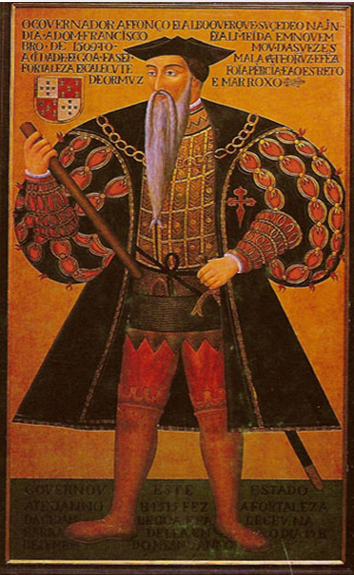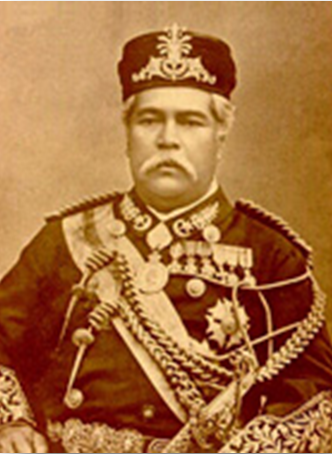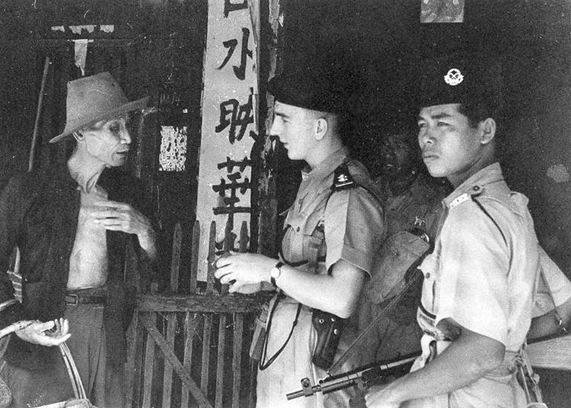Despite the fact that Malaysia is characterized by a rich tapestry of cultures, intertwining histories and un-spoilt natural wonders, there are a great many fascinating facts about the country that, for whatever reason, tend to only emerge intermittently in public discourse. Here are just a few nuggets of information about Malaysia that are sure to pique the interests of those wanting to know more about the country’s past and present.
1.Iskandar the Great?:Past Malay Rulers are Believed to be Descended from Alexander of Macedon
Photo Credit: kudumomo, Flickr
One of Malaysia’s greatest works of literature is the Sejarah Melayu (The Malay Annals). This extensive tome, believed to have been commissioned in 1612 by a Regent of Johor, covers over 600 years of the country’s history. Much of the narrative focuses on the founding of the Malacca which during the 15th century oversaw the most successful entrepôt in South East Asia. The first ruler of Malacca, so claims the Sejarah Melayu, was descended from a noble line of princes from the house of Palembang, the center of the colossal Srivijayan Buddhist Empire which dominated the straits from the 7th to the 13th century. What is interesting about this myth shrouded line of kings is Raja Iskandar Zulkarnain: a figure that is often associated with the Macedonian King Alexander the Great (Considered by many to be the greatest general who ever lived!). Though the idea that the sultans of the Malaysian peninsular are in some way related to Alexander the Great is widely considered to be highly unlikely by historians, particularly as two other candidates for the mysterious Iskandar Zulkarnain are Cyrus the Great and an unnamed King of the Himyar Empire, the idea still persists, particularly among Malaysian Muslim Scholars. The Malay Epic Hikayat Iskandar Zulkarnain has done much to fuel the idea that Iskandar is, in fact, Alexander. However, the Hikayat Iskandar Zulkarnain is unanimously decreed as a work of fiction.
Though controversy continues to surround the figure of Iskandar Zulkarnain, the fact that Alexander the Great launched a campaign against India (the subcontinent that has had such a distinct influence on Malaysian culture) in around 326B.C means that the possibility of the famous Macedonian’s descendant’s finding their way to Srivijayan Sumatra is not entirely impossible.
2.Avoiding Mis4tune: Chinese Numerical Superstitions Abound in Malaysia

Photo Credit: Wikipedia
Fate and phonetics are, it seems, inseparably linked according to the Chinese superstitions that abound in Malaysia. A great number of the license plates owned by Chinese-Malaysians prominently feature the number 8 because the Cantonese pronunciation of this particular number is “baat”. “Baat” sounds similar to “faat”: the Cantonese word for prosperity. Because of this, it is believed that by endowing their vehicle with 8’s the driver will wax greater in good fortune.
A similar, though darker, example of such superstition can be found within the elevators of the innumerable office buildings throughout the country. Often times, the 4th floor is written as 3A. This is because the number 4 when spoken sounds disturbingly like the Chinese character for “death”.
3.Cultural Conquistadors: Portuguese Adventurers Conquered Malacca

Photo Credit: Wikipedia
Several years before Cortés and his armored band of treasure hunters pillaged the great pyramids of Mexico, Portuguese Conquistadors, armed with swords and harquebuses, were wading out of the straits to take the city of Malacca. The commander of the Portuguese, the nation who had been busy carving out the world’s first global Empire since 1415, was the great statesman and military genius Afonso de Albuquerque. He was sent by King Manuel the 1st to disrupt Muslim trade in the Indian Ocean.
The foes Albuquerque faced were nothing like the feathered, club-wielding Aztecs the Spaniards cowed into submission with their horses and gunpowder. The Sultan of Malacca’s army was fully equipped with artillery and elephants, and it was only after a second attempt (the first assault being an utter fiasco) that the Portuguese took the port city for Christendom.
Albuquerque consolidated his position by constructing the fort A Famosa (“The Famous”), the ruins of which remain a popular sight-seeing attraction in Malacca. Though, not surprisingly, the Portuguese invaders suffered continual retaliations and rebellions from the Malay and Chinese populous and were finally dislodged from Malacca by the Dutch in the early 17th century, the impact of their culture and traditions still resonates throughout the state to this day in music, language and delicious cuisine.
4.Strange Susuk: Malaysia’s Infamous Cosmetic Sorcery is Still Widely Feared
Photo Credit: JacobEnos, Flickr
A bizarre practice that has survived from the pre-Islamicization era of Malaysia and Indonesia entails the practice of inserting needles (made of gold, silver or other precious metals) under the skin. It is believed that when a Bomoh (A Malay Shaman) implants the Susuk (the name for the needle talisman) with the right incantations, the ‘wearer’ will enjoy certain benefits ranging from relief from minor afflictions to continual youth and beauty. It is therefore also believed that Susuk users will be unable to die unless the charms are removed.
The superstition associated with Susuk, considered haraam and black magic by the Islamic Malaysian populous, also involves the user being able to supernaturally keep their spouse safe from being tempted by others.
5.Blame it On the Bugis: Malaysia’s History Has Been Largely Influenced by Migrant Mariners from South West Sulawesi

Photo Credit: Wikipedia
In 1669, after a brutal civil war, the diaspora of the Bugis people (one of the 3 major linguistic and ethnic groups from the South Sulawesi region) spread to Sumatra, Borneo and Peninsular Malaysia. Once there, they swiftly gained a reputation for being the finest sailors, merchants and warriors ever to roam the Straits of Malacca (hence they are often likened to the Vikings). The Bugis influence on the socio-political landscape of Malaysia was, and in many ways continues to be, thoroughly pronounced (especially in architecture). This was particularly true during the 18th century, a period which many Malaysian historians refer to as “The Age of the Bugis”, when they managed to hold a great deal of sway in influencing the Johor Sultanate (one of the most important Malay states at that time). One of the most influential Bugis rulers was Sultan Sir Abu Bakar ibni Daing Ibrahim (1833-1895) who is lauded as the “Father of Modern Johor” for his progressive policies and impressive political acumen (particularly with the British).
Though the reign of the Bugis sultans and ‘underkings’ is long over, the contribution that the Ethnic Bugis continue to extend to the politics of Indonesia and Malaysia remains significant. Indeed, the current Malaysian Prime Minister Najib Tun Razak has Bugis roots.
6.Cobra Kingdom: The World’s Largest Species of Venomous Snake Can be Found in Malaysia
Photo Credit: zoonabar, Flickr
Malaysia has one of Asia’s largest populations of King Cobras, the largest species of venomous snake on the planet. The longest specimen ever recorded was captured at Port Dickson in April 1937. When it was subsequently brought to a London Zoo, the cobra grew to a whopping 5.71 meters!
The diet of the King Cobra consists primarily of other snakes and, after having gorged themselves on their fellow reptile, a full grown King Cobra can go without a meal for months on end, due to their incredibly low metabolic rate.
Like all snakes, King Cobras prefer to avoid direct contact and will attack only when provoked. Despite this, the neurotoxic venom of the King Cobra can be deadly, and its deep growling hiss is enough to unnerve even the most ardent of snake handlers.
7.The Retreat of the Reds: British and Malayan Cooperation Stamped Out Peninsular Communism

Photo Credit: Wikipedia
Malaysia has been one of the few theatres of war on earth where communist insurgents have been comprehensively defeated. The Malayan “Emergency” (so named because the Rubber and Tin mining industries would not be covered by their insurers were the term “war” used”) was a bloody conflict fort between Commonwealth forces (including the United Kingdom, Australia, The Federation of Malaya and several others) and the Malayan National Liberation Army (referred to only as “Communist Terrorist” by the British establishment).
The Emergency was resolved by the British not purely by way of outright military engagements and bombardments (the Communists being experts at guerilla warfare), but rather by a cunning mix of cash incentives, skillfully employed logistics and mass population removal. The communists in the jungle relied heavily on the ‘squatter’ communities (largely comprised of Malayan-Chinese) for supplies and recruits. When these communities were uprooted and implanted into more protected urban locales via a strategy imposed by the dashing High Commissioner Sir Gerald Templer, the reds were dealt a crippling blow. Another strategy imposed by Templer was propaganda and cash incentives for those who revealed the whereabouts of communist cells, or even guerillas who chose to give themselves up. One leaflet, copies of which were dropped by the thousand over the jungle via airplanes, promised a $250,000 reward for anyone who captured the Malayan Communist Party’s leader, Chin Peng, and brought him to the colonial authorities alive.
The dark days of the emergency, which lasted from 1948 to 1960, also saw Malaya given its independence from the British in 1957. This also hurt the communist forces, many of whom fought largely to remove the colonial government. Now it seems almost surreal to think that the expat experience in Malaysia entailed firing a bren gun from the balcony of your bungalow every odd night to fend off encroaching guerillas. This, however, was a practice that several British men and women had to employ to protect themselves on their isolated rubber plantations.
8.Spiritual Superstars: Muslim Pop-group Raihan Hold Record for Best Selling Locally Produced Album
Photo Credit: amrufm, Flickr
It is not often that a Muslim pop group achieves multi-platinum status with a debut record. The spiritual music of Raihan on their first album Puji-Pujian (released in 1996) continues to swoon Malaysians and is, to date, the country’s best selling local album, with an impressive 3,500,000 units sold in total (12 times platinum status!). Raihan, who have also enjoyed platinum status in Singapore and high levels of popularity in Indonesia, have also undertaken a world tour, performing in countries as far flung as Trinidad and Canada. Raihan is one of the three Malaysian musician groups to have performed at London’s Royal Albert Hall.
Homepage Highlight Photo Credit: Tilemahos Efthimiadis, Flickr
"ExpatGo welcomes and encourages comments, input, and divergent opinions. However, we kindly request that you use suitable language in your comments, and refrain from any sort of personal attack, hate speech, or disparaging rhetoric. Comments not in line with this are subject to removal from the site. "


















